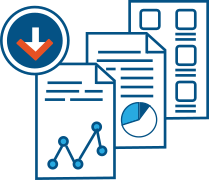GSA Market Research refers to the process by which acquisition professionals, program managers, and contractors gather and analyze data on federal buying behavior, vendor offerings, pricing trends, and contract opportunities within the General Services Administration (GSA) procurement ecosystem. It plays a foundational role in both pre-solicitation planning and contractor business development, supporting informed decisions that drive compliance, competition, and value in federal acquisitions.
For federal agencies, GSA market research is essential to planning effective procurements and selecting appropriate contract vehicles. For vendors, it is a strategic activity used to identify agency demand, understand competitors, evaluate pricing, and position offerings for success in the government marketplace.
Purpose and Scope
In the federal acquisition lifecycle, market research is required by the Federal Acquisition Regulation (FAR) Part 10, which mandates agencies to collect and analyze information that helps them determine:
- Whether commercial items are available to meet agency needs
- What acquisition methods and contract types are appropriate
- If small businesses can satisfy the requirement
- How competition can be maximized
- What pricing is fair and reasonable
When GSA is the chosen vehicle for procurement, the scope of market research narrows to tools and data specific to GSA-managed systems, contracts, and vendors. GSA market research supports agency goals such as use of Best-in-Class (BIC) contracts, adherence to Spend Under Management (SUM) principles, and compliance with socioeconomic procurement targets.
Vendors also engage in GSA market research to assess opportunity alignment, refine pricing strategies, and identify gaps or emerging trends in federal demand.
Tools and Resources for GSA Market Research
GSA provides a range of tools and platforms that offer actionable market intelligence. These resources allow both government and industry stakeholders to view contract-level data, pricing comparisons, vendor profiles, and product/service availability under MAS and other GSA contract vehicles.
The most widely used GSA market research tools include:
- GSA eLibrary — a searchable database of all GSA Schedule contracts, showing contractor information, awarded SINs, and contract terms
- GSA Advantage! — the government’s e-commerce platform for browsing product and service listings with pricing, part numbers, and compliance attributes
- CALC (Contract-Awarded Labor Category tool) — allows side-by-side comparisons of labor category rates across awarded contracts
- GSA eBuy — provides visibility into current RFQs under GSA Schedules, helping vendors understand agency demand and procurement cycles
- Acquisition Gateway — a centralized platform offering category management guidance, best practices, and data-driven dashboards for acquisition professionals
- SAM.gov — not specific to GSA but essential for identifying contract opportunities, awards, and agency purchasing behavior at a broader level
These tools are publicly accessible and serve as the foundation for rigorous, data-backed market research processes across federal contracting.
How Agencies Use GSA Market Research
Federal agencies use GSA market research to ensure procurements are well-structured, competitive, and compliant with policy. Before issuing a solicitation or placing an order under a Schedule, contracting officers conduct market research to determine availability, pricing, and small business participation potential.
Typical agency uses of GSA market research include:
- Identifying qualified vendors under relevant SINs to support limited source justifications or market surveys
- Comparing pricing and service offerings to evaluate reasonableness and inform Independent Government Cost Estimates (IGCEs)
- Selecting appropriate contract vehicles that meet policy objectives such as Best-in-Class usage or small business utilization
- Assessing vendor past performance through Schedule history and customer reviews
- Confirming product/service compliance with trade laws, cybersecurity standards, or sustainability goals
This research supports procurement planning documents, acquisition strategies, and source selection decisions. When done thoroughly, it reduces acquisition cycle time and helps mitigate risk.
How Contractors Use GSA Market Research
For contractors, market research is equally critical and should be a regular part of strategic planning and pipeline development. Companies use GSA market data to identify trends in agency buying, refine their GSA Advantage! listings, and tailor proposals to match federal needs.
Common uses of GSA market research by contractors include:
- Analyzing competitor pricing and positioning to develop more competitive GSA rates and better structure value propositions
- Identifying agency buying patterns to target outreach efforts or prioritize participation in specific RFQs
- Tracking solicitation activity to predict future demand or rebid cycles within a particular SIN or category
- Benchmarking labor categories or product specs to ensure offerings meet federal expectations
- Evaluating opportunities for contract expansion by studying unmet needs or underserved areas under existing SINs
Contractors who engage in continuous market research are often better positioned to win GSA task orders, propose relevant contract modifications, and respond strategically to solicitation refreshes and pricing trends.
Conclusion
GSA Market Research is a cornerstone of effective government acquisition and contractor success. It supports informed procurement planning, promotes transparency, enhances competition, and aligns commercial offerings with public-sector demand. Whether you are a government buyer looking to build an acquisition strategy or a vendor seeking to sharpen your competitive edge, consistent and focused use of GSA market research tools and practices is essential. By leveraging the available data and applying it strategically, both sides of the acquisition equation can achieve better outcomes and maximize the value of every procurement.


